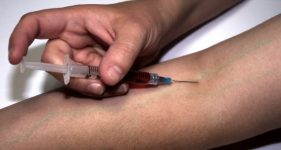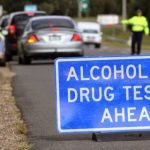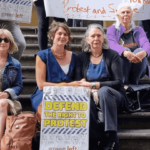Bad Batch of Heroin Kills 13 in Sydney

NSW State Coroner Michael Barnes has issued an urgent warning after 13 deaths in one month have been attributed to a tainted batch of heroin circulating around Sydney.
All cases occurred between May 2 and June 3, with many of the deceased found with drug paraphernalia on or near their bodies, indicating they were killed shortly after injecting the substance.
“A spike in heroin overdoses over a short period suggests an unusually strong or corrupted supply being sold in Sydney,” Mr Barnes said. “There is an urgency to bring this spate of drug-related deaths to the attention of the public prior to any inquest being held.”
Cause of Death
The tragedy has been compared to a recent spike in deaths in Vancouver, Canada. There, a batch of pink-coloured heroin suspected of being cut with a dangerous filler, the fast acting analgesic ‘fentanyl’, led to 16 overdoses on a single day.
While heroin deaths are primarily linked to poly-drug use – such as combining the drug with other depressants such as alcohol or benzodiazepines – the recent deaths are a reminder of the potentially fatal consequences of drug fillers. As Mr Barnes points out, street-level heroin can be cut with drugs or compounds that can kill a person in a single dose, with users having no way of knowing their drugs are tainted.
NSW Police Drug Squad Commander Michael Cook says heroin users can never be sure of what they are taking, creating a constant risk of fatality. “There is no quality control in the production process,” he said. “They will do whatever it takes to ensure a fatter profit margin can be achieved.”
Harm Minimisation
Such statements beg the question of how we can create quality control in the production process, and thereby reduce deaths.
The Australian Drug Foundation believes there is a need for greater access to safe-injecting rooms to minimise the risk of fatalities.
The Foundation’s Director of Policy, Geoff Munro, says unsupervised – or improperly supervised – heroin use increases the danger of death through overdose and impurities. He points out that an evaluation of the Kings Cross injecting facility found that it decreased the danger of death, while at the same time assisting users to get help, reducing the transmission of diseases such as HIV and Hepatitis C, and reducing problems associated with discarding needles.
The annual cost of Sydney’s Medically Supervised Injecting Centre is only about $3 million, a drop in the ocean compared to the billions currently spent on enforcement.
Chief Executive Officer of NSW Users & AIDS Association, Dr Mary Harrod, believes there is also a need for a roll-out of naloxone across Australia.
Naloxone can instantly reverse the effects of heroin overdose. It is not addictive and has no effect on those without opioids in their system. While the NSW State Government has re-classified Naloxone as a Schedule 3 drug – meaning it can be obtained over-the-counter from pharmacies– other parts of Australia have been slow to accept change, including the ACT and Western Australia.
In 2013, the UN Office on Drugs and Crime and the World Health Organisation recommended making naloxone readily available to opioids users, as well as their peers and family members who may be present in the event of overdose.
“Naloxone is essentially a drug that reverses opioid overdoses, so it really has no other clinical use, and it’s safe,” Dr Harrod said. “It’s not something that people can go on and use illicitly. It really has one action, and that’s to reduce overdoses.”
As discussed in previous blogs, there is indeed a way of making drug users aware of dangerous – pill testing. Such tests can be conducted on a range of drugs including ecstacy, cocaine and heroin, and take just 30 minutes to return a result, allowing users to make an informed decision about whether to use the substance and, if so, how much of it.
Pill testing has been extremely effective in alerting users at European music festivals to deadly impurities, and there are indications that trials may occur in Australian jurisdictions at the end of this year – although not in NSW.
Decriminalisation
Many believe that harm minimisation measures are really just stopgaps, when real controls on the purity and composition of substances can occur through decriminalisation and regulation.
It wasn’t long ago that Portugal was losing 400 lives per year to drug overdoses, while an average of 1400 new sufferers of HIV were being diagnosed every year. In 2001, the country decriminalised the possession and use of drugs, turning what was a criminal law problem into a health issue that could be managed and treated.
While many argued that decriminalisation would create a ‘free for all’ or ‘orgy of drug use’ in the country, the use of drugs amongst Portuguese adults has steadily fallen over that period of time. What’s more, the number of new HIV cases are way down and the country is experiencing extremely low drug overdose rates, nearly 6 times lower than the European Community average.
Like many others, the Australian Drug Foundation has urged Australian lawmakers to learn from Portugal.
“If you listen to what a lot of the police are saying right around Australia, we’re never going to arrest our way out of our drug problem,” the Foundation said. “We need to try some different approaches to dealing with them and Australia needs to look at all the options”.
Moving Forward
While heroin use in Australia has been declining since the 1990s, the 2016 National Drug and Alcohol Research Centre Report found that heroin-related deaths have increased in recent years. In 2012, for example, 639 people died from accidental opioid overdose in Australia. 30% of these were heroin-related and 70% due to pharmaceutical opioids.
Something clearly needs to be done in order to save lives and reduce overall harm and ballooning enforcement costs. Although Portugal-style decriminalisation may be some time off, there are harm minimisation measures we can broadly implement right now to reduce the number of preventable deaths on our streets and at our festivals.
Perhaps in the not-too-distant future, the positive experiences of countries that take the bold step of decriminalising drug possession and use will be impossible to ignore.






